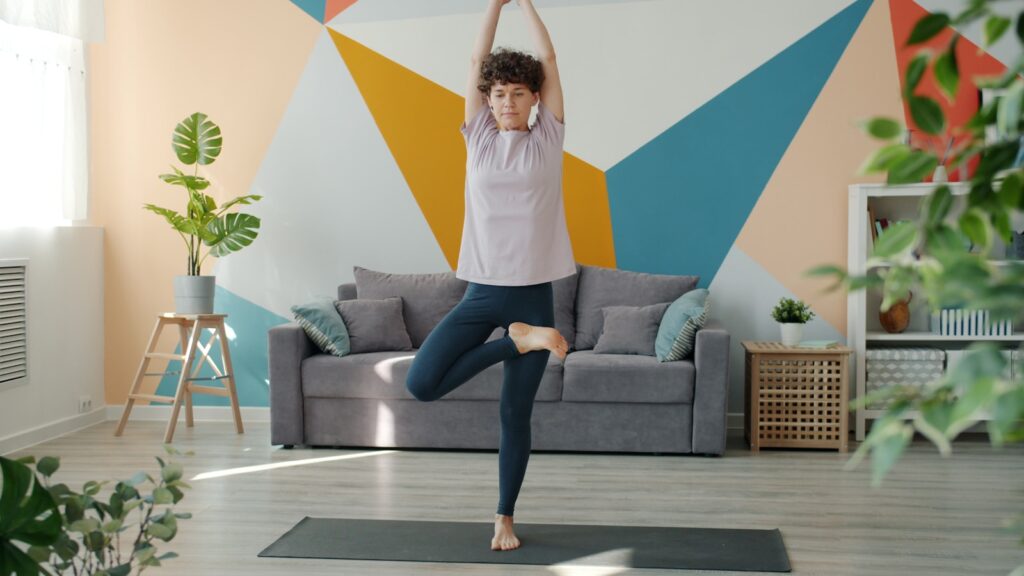
In our increasingly interconnected yet fragmented world, the ability to sustain focus often feels like a rare commodity. We are constantly assailed with information from our senses, and digital distractions pull our attention in countless directions, making it challenging to concentrate on one task at a time. This pervasive mind-wandering not only diminishes our productivity but also detracts from our overall well-being, leaving us feeling stressed and disconnected from the present moment. Fortunately, there is a powerful and accessible practice that can reverse this trend: mindfulness.
Mindfulness is fundamentally about cultivating the quality of being present—the experience of being open and aware in the moment, without judgment or criticism. It directs our minds to the here and now, preventing them from wandering to past regrets or future anxieties. While often associated with meditation, it’s important to clarify that mindfulness is a mindset, while meditation is the training designed to achieve it. You don’t necessarily need formal meditation sessions to integrate mindfulness into your daily routine; there are myriad other practical ways to begin.
Scientists have consistently demonstrated that mindfulness techniques yield significant benefits, improving self-control, objectivity, tolerance, enhanced flexibility, concentration, and empathy, leading to greater mental clarity. Dr. Amishi Jha, director of contemplative neuroscience for the Mindfulness Research and Practice Initiative, emphasizes that “Wherever it is that attention goes, the rest of the brain follows. It means that where you pay attention, makes up the moments of your life, it actually makes up your life’s experience.” This underscores the profound impact of directed attention on our daily existence and the quality of our lives. If you’ve found traditional meditation challenging, don’t worry; this article provides practical, actionable strategies to boost your focus and well-being.
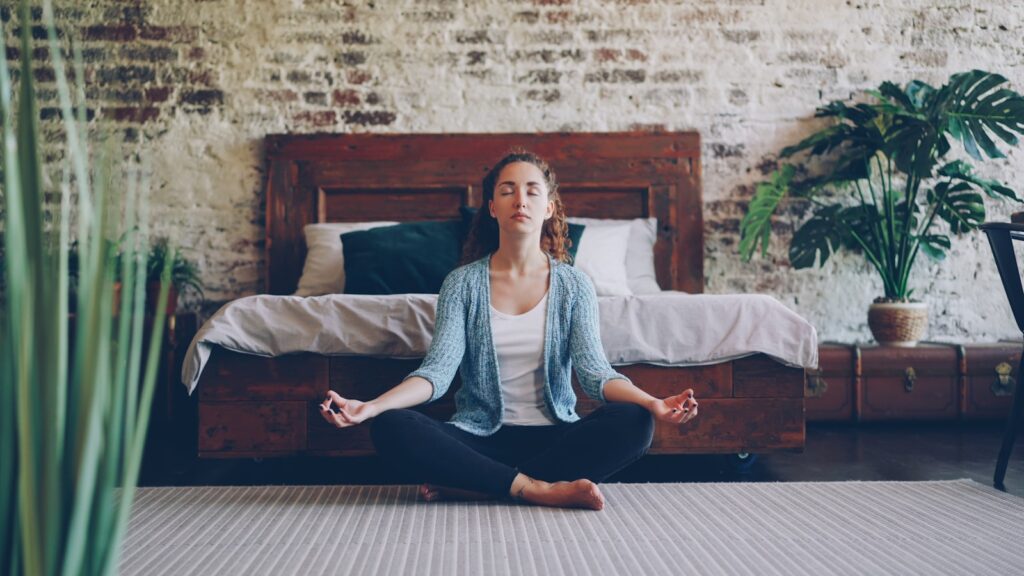
1. **Watch your own movie**
Many of us navigate our days on autopilot, performing tasks without conscious awareness of our actions or their nuances. This state of unmindfulness can lead to errors and a diminished quality in our work, as the end product invariably suffers when we are distracted and unaware. The ‘Watch your own movie’ exercise is a powerful method to disrupt this pattern and cultivate a heightened sense of presence and intentionality in everything you do, no matter how routine or seemingly insignificant the task may be.
To engage in this exercise, imagine yourself as an objective observer, narrating the events of your life as if describing a movie to someone who cannot see it. Your goal is to pay special attention to every detail and articulate what is happening with absolute clarity, ensuring that another person could fully comprehend the scene. The ‘movie’ in this scenario is your own life, and you are relaying the story to yourself, not an external audience.
Begin by focusing intently on whatever activity you are currently engaged in. Describe every element that is unfolding, being as specific and detailed-oriented as possible. For instance, if you are washing dishes, notice the temperature of the water, the feel of the soap, the texture of the sponge against the plate, and the movements of your hands. This meticulous observation is designed to increase your awareness of *how* you are performing the task, rather than just *what* you are doing.
By engaging in this practice, you move beyond mere automatic execution and connect more deeply with your actions. This enhanced awareness of your behavior empowers you to notice subtle patterns, improve your craft, and find greater engagement in tasks that might otherwise feel mundane. It’s an effective way to inject mindfulness into your everyday existence, transforming ordinary moments into opportunities for focused attention and self-observation.
Read more about: An Unforgettable Time: Iconic Comedians & A Hollywood Legend Depart, Marking the Quiet of a Comedic Force

2. **Observe other people**
In our daily lives, we often glance at reality without truly paying attention to it. Our observations are frequently superficial, influenced by preconceived notions or quick judgments. This exercise is designed to sharpen your focus by transforming you into a more astute and non-judgmental observer of the world around you, particularly the people within it. It’s a practice you can readily integrate into various settings, whether you are at your office, in a bustling park, or simply riding public transportation.
To begin, select one person within your immediate environment and direct your attention entirely towards them. Observe their appearance in detail—their clothing, hairstyle, and any accessories. Then, shift your focus to their body language: their posture, gestures, facial expressions, and how they interact with their surroundings or companions. Your objective is purely to watch and become aware of what is unfolding, without any attempt to interpret their thoughts, guess their intentions, or pass judgment on their actions or attire.
After a period of observation, gently shift your attention to another individual or a group of people nearby and repeat the process. The key here is to simply take in the sensory information without attaching narratives or evaluations. We are often prone to judging people based on their looks or initial actions, and when we do this, we inadvertently cease to truly see them. Mindfulness necessitates seeing things as they are, unfiltered by our own emotions, biases, or subjective lenses.
This practice cultivates a deeper level of attentiveness to the present moment and to the subtle cues that often go unnoticed. By consciously suspending judgment, you train your mind to perceive reality with greater clarity and openness. It not only enhances your observational skills but also fosters a more mindful and empathetic engagement with the human experience unfolding right before your eyes.
Read more about: The Ultimate Post-Accident Checklist: 10 Essential Documents You’ll Need to Secure Your Claim
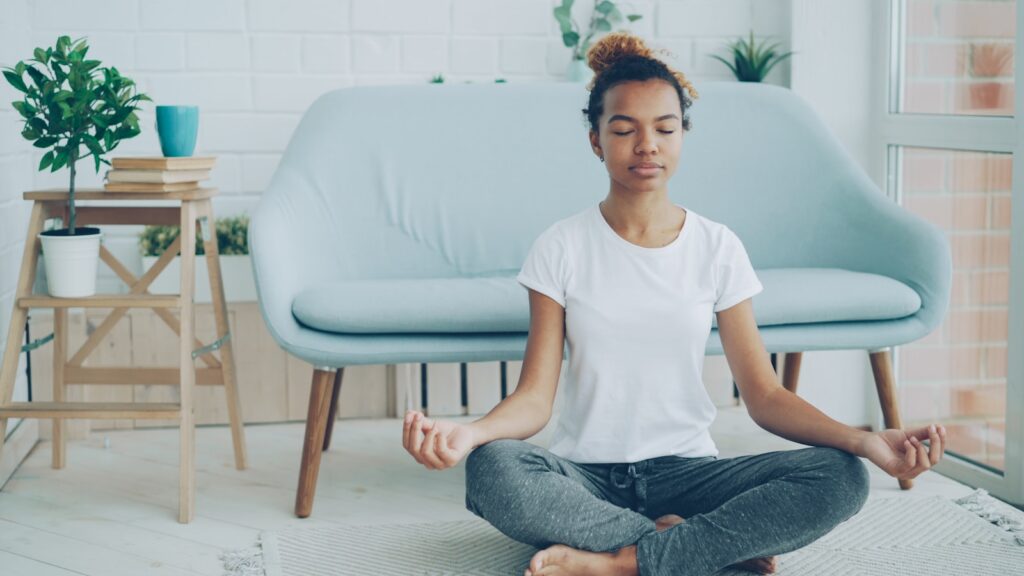
3. **Slow down**
In our fast-paced society, there’s a constant drive to move quickly from one task to the next, often leading to a hurried and fragmented experience of life. While this rush may seem efficient, it frequently means we are merely doing things without truly performing at our best. By deliberately slowing down, we create an opportunity to re-engage with the present moment, reconnect with our actions, and enter a state of flow that enhances both the process and the outcome.
Taking more time to perform an activity allows for a deeper appreciation of what you are doing. It shifts the focus from merely completing a task to experiencing the task itself. This deliberate pace also has a direct and significant impact on the quality of your work, as many mistakes arise not from a lack of knowledge, but from sloppiness induced by haste. As the timeless wisdom reminds us, “there is never enough time to do it right the first time, but always enough time to do it over.” Slowing down is an investment in doing things correctly from the outset.
It is crucial to understand that slowing down does not equate to being slow or inefficient. Rather, it is about finding a harmonious balance between pace and precision. When we discover this equilibrium, we often become more productive and effective overall, as the need to redo tasks is minimized. This mindful approach to activity transforms chores from burdensome necessities into opportunities for focused engagement, reducing stress and enhancing satisfaction.
When you truly enjoy what you are doing, the compulsion to rush through tasks diminishes. Instead of viewing tasks merely as items to check off a list, you learn to savor the journey of accomplishment. This shift in perspective allows for a richer, more fulfilling experience in all aspects of your life, making your actions more deliberate, enjoyable, and ultimately, more successful.
Read more about: Beyond Lithium-Ion: 15 Simple Facts About Solid-State Batteries That Will Electrify the EV Revolution

4. **5-minute breathing exercise**
Breathing is a fundamental, life-sustaining process, yet it is often overlooked as a powerful tool for self-regulation and mindfulness. When we experience anxiety or stress, our natural breathing patterns tend to become shallow, irregular, or even momentarily halted, exacerbating our emotional state. This simple, brief exercise offers an immediate and effective pathway to cultivate calmness and heightened awareness, requiring just five minutes of your day.
To practice, find a comfortable position, whether seated on a chair or the floor, ensuring your back is upright but not rigidly forced. Take a moment to notice your body and consciously relax any areas of tension. Begin to take a deep breath, focusing your full attention on the physical sensations of this vital process. Feel the air as it enters your body, perhaps noting its coolness, and then as it gently exits, carrying warmth with it. Allow your breath to flow naturally, without any attempt to control or force it, trusting your body’s inherent wisdom.
As you continue, observe the gentle expansion and contraction of your chest or abdomen with each inhalation and exhalation. Keep your focus anchored to these sensations, one breath at a time. It is entirely normal for your mind to wander; when it does, acknowledge the thought without judgment. You might mentally label it “thinking” and then, with gentle resolve, guide your attention back to the sensation of your breath. This act of noticing mind-wandering and redirecting focus is the core “push-up” of mindfulness practice, as described by Dr. Amishi Jha.
Consistent daily practice of this five-minute breathing exercise not only enhances your respiratory rhythm but also infuses your life with a profound sense of calmness and increased self-awareness. As we become more attuned to our internal states through the anchor of breath, we foster a greater sense of peace within ourselves, laying a foundation for improved focus and emotional regulation throughout the day.
Read more about: 12 Proven Strategies for CEOs: Mastering Stress and Sustaining Peak Performance in High-Pressure Environments
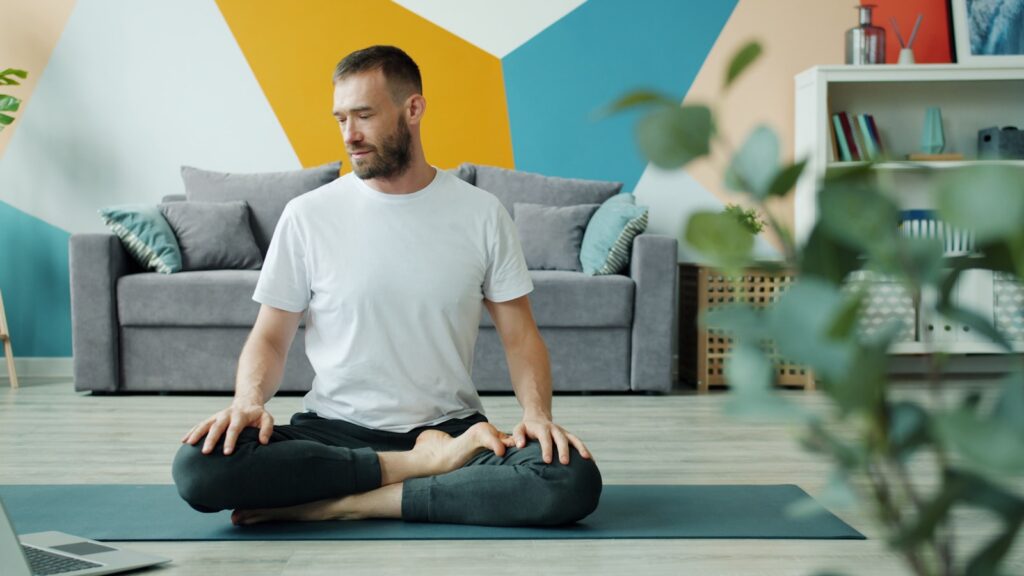
5. **The body scan**
Mindfulness is not solely a mental exercise; it is an integrated practice that demands attention to both our mind and our physical body. Our bodies are remarkable registers of everything that happens to us, often holding tension and communicating signals of distress or comfort. Pain, for instance, is a critical signal that warrants our mindful attention, prompting us to inquire about its location and underlying causes. The ‘body scan’ is a popular and highly effective mindfulness exercise, particularly favored by beginners, for developing this vital somatic awareness.
This exercise encourages you to systematically bring your awareness to different parts of your body, noticing sensations without judgment. You can practice it in various moments throughout your day—while brushing your teeth, waiting for public transport, or during an elevator ride. These brief, interstitial moments are ideal opportunities to overcome the pervasive instinct to reach for your phone and instead, consciously direct your focus inward, to your physical form.
To perform a body scan, begin by taking a deep, settling breath. Then, slowly and deliberately, mentally scan your body, starting from your head and moving downwards. Pay attention to your head, face, neck, shoulders, chest, arms, legs, and feet. As you progress, notice any sensations—be it warmth, coolness, tingling, or areas of tension or discomfort. When you encounter a sensation, particularly pain or tightness, gently direct your breath towards that area, imagining the oxygen flowing into it, bringing calmness and relaxation. This focused breathing can help release held tension.
Practicing the body scan more than once a day can significantly enhance your body awareness and facilitate a deeper connection between your mental and physical states. Recognizing where your body holds tension or discomfort often reveals underlying mental stresses, as muscle knots can be physical manifestations of a mind burdened with worries. By regularly checking in with your body, you empower yourself to address these signals proactively, fostering greater physical ease and mental clarity.
Read more about: Behind the Blunders: 8 Celebrity Endorsement Disasters That Spiraled into Lawsuits and Left Brands Reeling

6. **Observe with your eyes closed**
Our eyes are often our primary conduits to the external world, but they can also be a significant source of distraction. Visually, we tend to jump rapidly from one object to another, leading to a fragmented and superficial perception of our surroundings. In a world saturated with visual stimuli, intentionally removing sight can be a profound way to deepen our focus and heighten our awareness through other sensory channels. This exercise, best practiced in a public space, invites you to experience your environment without the visual filter.
Begin by finding a comfortable spot and gently closing your eyes. Take a deep, calming breath, allowing yourself to relax into the moment. Once settled, shift your attention to the sounds around you. Start by focusing on the noises that are closest to your immediate vicinity—perhaps the rustle of leaves, the distant hum of traffic, or the chirping of birds. As your auditory focus sharpens, gradually expand your awareness to include sounds that are farther away, noticing their quality, intensity, and direction.
Next, refine your listening. Can you discern specific voices or conversations nearby? If so, simply register the sounds of the words without trying to interpret their meaning or engage with their content. Then, extend this detailed listening to more distant noises, sounds, and voices. The essence of this practice is to listen with an open, non-analytical mind, striving to understand what is happening purely through sound, rather than attempting to analyze or draw conclusions. It’s about receiving sensory data without the usual cognitive overlay.
This exercise teaches us to pay attention in a fundamentally different way—to observe without seeing. By temporarily eliminating visual input, you train your brain to enhance its processing of auditory and other non-visual cues. This not only strengthens your ability to focus in the absence of dominant visual stimuli but also reveals a richer, more nuanced experience of your environment, demonstrating the power of mindful listening in expanding our perceptive capabilities.
Read more about: Beyond the Booth: Unpacking 13 Legendary Music Feuds That Rocked the Industry

7. **The tangerine experience**
In our hurried lives, we often consume food and interact with objects without truly experiencing them, missing out on a wealth of sensory information. The ‘tangerine experience’ is a delightful and deeply insightful exercise designed to dramatically improve our ability to focus on intricate details and to anchor our attention firmly in the present moment. While the exercise suggests a tangerine due to its unique shape and texture, it can be equally effective with any fruit or object of your choice, such as a tomato or a walnut.
Begin by taking the fruit in your hand and engaging all your senses, one by one. First, visually inspect the tangerine. Pay meticulous attention to its shape—its curves, indentations, and overall form. Notice its color, variations in hue, and any imperfections or unique markings on its skin. Allow your eyes to explore every aspect of its visual presentation without judgment or labeling.
Next, bring in your sense of touch. Feel the fruit with your fingertips, noticing its texture. Is it smooth, bumpy, rough, or soft? Gently manipulate it, observing how its shape and texture respond to your touch. Feel its weight and temperature. Then, bring the tangerine closer to your nose and inhale its aroma. What scents do you detect? Are they subtle or pronounced? Now, close your eyes and smell it again, allowing the fragrance to fully register. You might even hold your breath for a second or two after smelling, noticing how long the perfume lingers in your awareness.
By immersing yourself fully in the exploration of a single piece of fruit, you are intensely practicing single-point focus. In this state of profound concentration, all other distractions naturally recede into the background. Mindfulness, at its core, is precisely about noticing with full awareness what is happening right in front of you, in this very present moment. This seemingly simple exercise offers a powerful lesson in concentrated attention, enhancing your capacity to experience life’s details more richly and fully.
Having explored foundational mindfulness exercises, we now turn our attention to integrating these principles more deeply into the fabric of daily life. These next six practices are designed to cultivate deeper self-awareness, enhance emotional regulation, and foster a sustained sense of gratitude, transforming ordinary moments into opportunities for profound personal growth and improved focus. They extend mindfulness beyond simple awareness into active engagement with our surroundings and internal states.
Read more about: A Delicious Blast from the Past: Discontinued Childhood Foods We Seriously Miss (and Still Dream About)

8. **Track footsteps**
In our hurried existence, we often glance at the world around us without truly seeing, especially the subtle signs of life and movement. Tracking, far from being a specialized skill for experts, is the art of interpreting the indirect signs left by animals or people. It’s an entertaining and insightful practice that encourages a detailed observation of our environment. The purpose of this exercise is not merely to notice tracks but to delve deeper, attempting to understand what left them behind and the story they tell.
Consider the experience of observing deer tracks after a massive ice storm in a park, as one might in Wisconsin. The initial observation reveals two distinct pairs—one smaller, one larger, suggesting a mother with her calf. Following their path, one might notice them running in one direction before turning back, with the tracks appearing fresh and perfectly shaped. Further scrutiny could reveal some tracks are deeper or spaced farther apart, hinting at running or jumping. This detailed observation transforms a simple walk into an investigative journey.
While this may initially seem like a trivial pursuit, observing footprints is an exceptional way to train our focus. It cultivates a sense of calm and awakens a profound curiosity about our surroundings, drawing us out of our internal dialogues and into the present moment. Ideal surfaces for practicing this include snow and sand, where tracks are clearly visible, but it can be effectively done in a park or any other public space where signs of movement are left behind.
Read more about: Cardi B’s Custom ‘Fleet’: 12 High-Octane Achievements That Prove Her Bling Obsession

9. **Turn your chores into a meditation**
Many of us harbor a strong aversion to chores, perceiving them as tedious obligations. Yet, the more we resist or avoid a task, the more burdensome it becomes in our minds. Mindfulness offers a transformative perspective, teaching us to not just notice things, but to genuinely enjoy what we are doing, even the most mundane of household tasks. This exercise encourages us to elevate daily chores from mere obligations to opportunities for focused, meditative engagement.
To begin this practice, select a chore that you typically dislike or one you wish to master. Preparation is key: consciously set up your environment by removing any potential distractions or obstacles that might impede your focus. Before you even start, take a moment to visualize the desired outcome. For instance, if you’re cleaning the kitchen, imagine how you want it to look, sparkling and organized, and how you will feel once that sense of accomplishment washes over you.
As you embark on the chore, fully immerse yourself in the activity. Pay meticulous attention to every detail—the feeling of the water, the scent of the cleaner, the texture of the sponge. Observe your movements: how your hands work, the rhythm of your body. Challenge yourself to improve your craft; experiment with alternative ways of performing tasks. Which method works more efficiently or feels more graceful? Notice how you feel when you improvise and adapt, rather than simply repeating the same motions by rote. Maintain a clear mental image of your end goal; you’re not just doing something, you’re striving to become the most skilled kitchen cleaner possible.
Once the chore is completed, take a deliberate moment to step back and appreciate the outcome of your mindful effort. This acknowledgment reinforces the positive experience and deepens your connection to the task. This practice can be repeated with the same chore, allowing you to refine your technique and deepen your presence, or applied to different chores to bring a fresh perspective to various aspects of your routine.
Read more about: Strategic Spending for Sustainable Happiness: 12 Scientifically-Backed Purchases That Transform Well-being

10. **The mindful window**
Distance often grants perspective, allowing us to perceive aspects of our surroundings that we might have previously overlooked or taken for granted. The ‘mindful window’ exercise capitalizes on this phenomenon, inviting you to rediscover the familiar world outside your window with fresh, attentive eyes. Find a window, whether at home, in the office, or any comfortable spot, and allow your gaze to settle on the view. Begin by focusing on the objects closest to you, then progressively expand your focus to include things that are farther away.
As you observe, the core of this practice is to consciously avoid judging or labeling what you see. Resist the urge to name objects or attach narratives to them. Instead, shift your attention to the pure sensory data: the intricate shapes, the myriad colors, the subtle movements, and the varied textures. For this particular exercise, intentionally disengage your auditory sense; do not pay attention to the sounds, allowing your visual perception to become your primary gateway to the moment. This intentional filtering sharpens your visual focus and allows for a deeper appreciation of purely visual details.
This practice, requiring just a few minutes of your day, significantly enhances your ability to discover new things, even within highly familiar places. By systematically training your capacity to observe without the usual cognitive filters, you unlock a richer, more nuanced experience of your environment. The more consistently you engage in this mindful observation, the more layers of detail and beauty you will uncover in the world around you, reinforcing your capacity for sustained attention.
Read more about: The Digital Eye: 14 Critical Ways Car Insurance Companies Monitor Your Driving Behavior for Your Rates

11. **Mindful listening**
True listening, the kind that deeply registers and comprehends, is a skill often undermined by our tendency for mind-wandering and selective attention. The ‘mindful listening’ exercise is designed to powerfully highlight our capacity for attention, and more importantly, the impact that a lack of it can have on our interactions with others. This exercise is best suited for a group setting and requires a moderator to guide the process.
Participants are instructed to pair up. Each person then takes three minutes to share a personal story or anecdote with their partner, ensuring they have equal time. Once the first round of sharing is complete, the roles switch. The moderator then instructs participants to retell their partner’s story, striving for maximum accuracy and even attempting to use the same words their partner employed. Following this, the roles switch once more, and participants are asked to recount the story they *heard* as if it were their *own* story, speaking in the first person. This encourages a deeper empathetic connection and retention.
After both partners have completed these storytelling and retelling phases, everyone is encouraged to comment on their experience. They reflect on how accurate their partners were in retelling their stories and how it felt to narrate someone else’s experience as if it were their own. This powerful debriefing often leads to a profound realization of our true listening abilities—or lack thereof. For many, hearing their story imperfectly retold by others serves as a gentle yet potent reminder of how easily our minds wander during everyday conversations, underscoring the critical importance of mindful listening in fostering genuine connection and understanding.
Read more about: Protecting Our Little Ones: 14 Essential Steps for Flawless Car Seat Installation

12. **Name your emotions**
We are beings constantly awash in a complex current of emotions, yet paradoxically, we often fail to truly pay attention to what we feel. At times, we might overreact to situations without a clear understanding of the underlying emotional triggers. This exercise is specifically designed to help you become more intimately familiar with your feelings, transforming vague emotional states into clearly identified and understood experiences. It empowers you to navigate your emotional landscape with greater precision and self-awareness.
To practice, as emotions arise, take a moment to pause and consciously label them. You might find it helpful to close your eyes and focus inward on the physical and mental sensations accompanying the emotion. The key is to name them without passing judgment on the emotion itself. It’s crucial to recognize the subtle distinctions between feelings; for instance, ‘feeling upset’ is a broad term that doesn’t convey the same nuance as being ‘angry,’ ‘sad,’ or ‘frustrated.’ Often, we blend our emotions, leading to confusion and misinterpretation of our internal states. Developing this precise emotional vocabulary can significantly enhance your self-understanding.
By becoming more mindful of your emotional states, you gain a powerful insight into what genuinely affects your mood. This heightened awareness can help you uncover the true sources of your distress or joy. More importantly, it equips you to avoid overreacting to situations simply because you aren’t fully aware of what you are truly feeling. The more you get to know and accurately name your feelings, the less power they will have to cloud your judgment or dictate your behavior, leading to greater emotional regulation and mental clarity.
Read more about: 13 Shocking Celebrity Firings: From Set Dramas to Unseen Voice Recasts
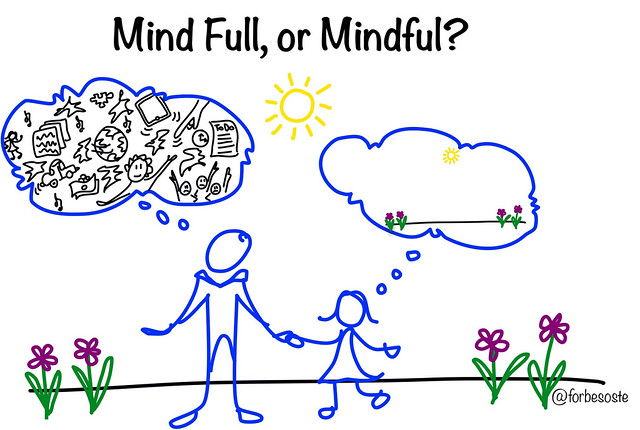
13. **Mindful gratitude**
One of the most significant sources of human frustration stems from our tendency to live perpetually in the future, constantly anticipating what might happen rather than appreciating the richness of the here and now. When our minds are consumed by thoughts, worries, or perceived dramas, our ability to pay attention to the positive aspects of our present reality diminishes. Cultivating gratitude is a powerful antidote to this, requiring us to consciously notice and acknowledge everything positive that unfolds in our lives. Our brains are naturally wired to focus on negative things—the events that didn’t go as expected or went wrong—making deliberate gratitude practice essential.
To engage in this practice, reserve some dedicated time, ideally before you go to sleep, to reflect on and capture all the good things you should be thankful for. Mentally recap your day, calling to mind all the people you met, the moments you genuinely enjoyed, what you achieved or learned, and even the small battles you won. This intentional reflection shifts your focus from perceived deficiencies to abundant blessings, grounding you firmly in the present moment.
Keeping a gratitude journal is an excellent and highly recommended practice, as it provides a tangible record of your positive experiences. Initially, this exercise might feel challenging or even frustrating, primarily because our brains are predisposed to highlight adverse events. However, with consistent time and practice, acknowledging all the positive aspects in your life will become increasingly easier and more natural. Practicing daily gratitude not only boosts your happiness but also trains your mind to scan for goodness, improving your overall focus on the positive aspects of your existence.
Read more about: Timeless Table Manners: Unpacking 12 Essential Dinner Rules That Transform Family Mealtimes
Increasing mindfulness is a journey, not a destination, and it’s a journey open to everyone. Remember, the most important step is simply to start, to begin somewhere, even with the smallest, most accessible practices. Many of these exercises might initially feel a bit awkward or unfamiliar, but consistent, regular practice is the key to releasing old, unhelpful patterns and cultivating new habits of attention and awareness. Embrace these practical strategies, experiment to see what truly resonates with you, and witness how these simple shifts can profoundly enhance your focus and enrich your life. Your mindful brain awaits its training!



